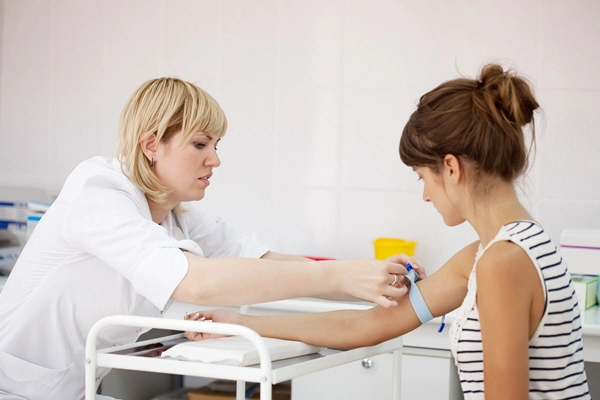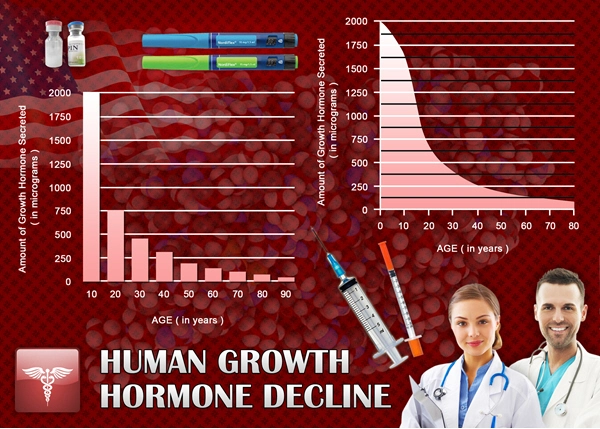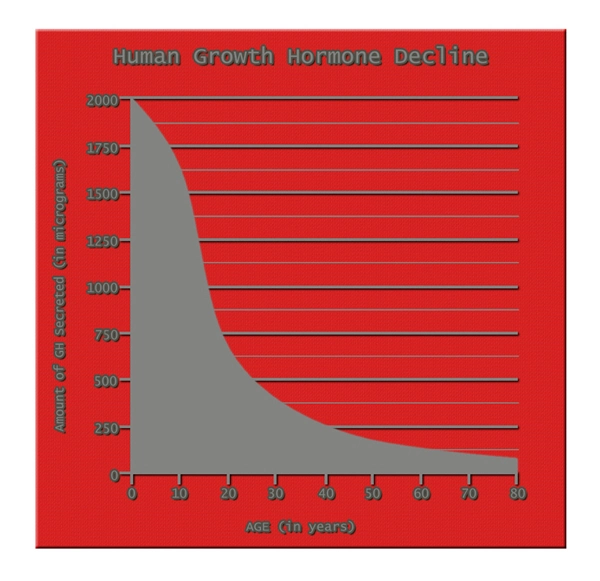Introduction
The intersection of socioeconomic status (SES) and health outcomes has been a focal point of medical research for decades. While the correlation between SES and general health is well-documented, the specific impact on penile health remains less explored. This article delves into a comprehensive study involving over 7,000 American men, examining how socioeconomic factors influence penile health. By understanding these relationships, healthcare providers can better address disparities and improve patient outcomes.
Study Overview and Methodology
The study in question analyzed data from a diverse cohort of over 7,000 American men, ranging in age from 18 to 80. Participants were recruited from various regions across the United States to ensure a representative sample. Detailed socioeconomic data, including income, education level, employment status, and access to healthcare, were collected alongside medical histories and penile health assessments.
Participants underwent thorough physical examinations, and self-reported data on sexual health and function were also gathered. Statistical analyses were conducted to identify correlations between SES indicators and penile health outcomes, including erectile dysfunction, penile lesions, and sexually transmitted infections (STIs).
Key Findings on Socioeconomic Status and Penile Health
The study revealed significant associations between lower SES and poorer penile health outcomes. Men from lower income brackets reported higher incidences of erectile dysfunction and were more likely to present with penile lesions and STIs. Education level also played a critical role, with those having less education experiencing worse penile health.
Employment status emerged as another crucial factor. Unemployed participants were more likely to report sexual dysfunction and had higher rates of untreated STIs compared to their employed counterparts. Access to healthcare was a significant mediator; men with limited access to medical services had poorer outcomes across all measured penile health indicators.
Mechanisms Linking Socioeconomic Status to Penile Health
Several mechanisms may explain the observed disparities. Firstly, lower SES is often associated with higher stress levels, which can negatively impact sexual function and overall health. Secondly, limited access to healthcare can lead to delayed diagnosis and treatment of conditions affecting penile health. Additionally, socioeconomically disadvantaged individuals may engage in riskier sexual behaviors due to a lack of education or resources, increasing their susceptibility to STIs and other penile health issues.
Implications for Public Health and Clinical Practice
The findings of this study have significant implications for public health policy and clinical practice. Addressing socioeconomic disparities in penile health requires a multifaceted approach. Public health initiatives should focus on improving access to education and healthcare services, particularly in underserved communities. Clinicians should be aware of the socioeconomic factors that may influence their patients' health and tailor their interventions accordingly.
Strategies for Improving Penile Health Outcomes
To mitigate the impact of SES on penile health, several strategies can be implemented:
1. **Education and Awareness**: Public health campaigns should educate men about the importance of regular health check-ups and safe sexual practices, with a focus on reaching lower SES communities.
2. **Healthcare Access**: Expanding access to affordable healthcare services can help ensure timely diagnosis and treatment of penile health issues.
3. **Community Support Programs**: Establishing support programs that address the social determinants of health, such as employment and housing, can indirectly improve penile health outcomes.
4. **Research and Advocacy**: Continued research into the socioeconomic determinants of penile health can inform advocacy efforts to reduce disparities.
Conclusion
This large-scale study underscores the profound impact of socioeconomic status on penile health among American men. By recognizing and addressing these disparities, healthcare providers and policymakers can work towards more equitable health outcomes. Future research should continue to explore these relationships and develop targeted interventions to improve penile health across all socioeconomic strata.
In conclusion, the link between SES and penile health is clear and compelling. As we move forward, it is crucial to integrate these insights into broader health initiatives to ensure that all American men have the opportunity to achieve optimal penile health.

- Navigating the Psychological Terrain of Penile Health: Insights for American Males [Last Updated On: February 21st, 2025] [Originally Added On: February 21st, 2025]
- Managing Penile Skin Conditions: Symptoms, Treatments, and Preventive Care for American Males [Last Updated On: February 22nd, 2025] [Originally Added On: February 22nd, 2025]
- Testosterone's Crucial Role in Male Penile Health and Sexual Function [Last Updated On: March 18th, 2025] [Originally Added On: March 18th, 2025]
- Genetics of Penile Development: Insights and Implications for American Male Health [Last Updated On: March 19th, 2025] [Originally Added On: March 19th, 2025]
- Optimal Penile Hygiene Practices for American Males: Health and Sexual Wellness Guide [Last Updated On: March 19th, 2025] [Originally Added On: March 19th, 2025]
- Penile Enlargement: Methods, Efficacy, Safety, and Psychological Impacts Explored [Last Updated On: March 19th, 2025] [Originally Added On: March 19th, 2025]
- Penile Trauma: Types, Emergency Care, and Long-term Management for American Males [Last Updated On: March 19th, 2025] [Originally Added On: March 19th, 2025]
- Penile Ulcers in American Males: Causes, Diagnosis, and Treatment Strategies [Last Updated On: March 19th, 2025] [Originally Added On: March 19th, 2025]
- Penile Nerve Blocks: Enhancing Pain Management and Surgery in American Males [Last Updated On: March 20th, 2025] [Originally Added On: March 20th, 2025]
- Obesity's Impact on Penile Health: Physiological and Psychological Effects on American Males [Last Updated On: March 20th, 2025] [Originally Added On: March 20th, 2025]
- Advancements in Penile Prostheses: Enhancing ED Treatment for American Males [Last Updated On: March 21st, 2025] [Originally Added On: March 21st, 2025]
- Penile MRI: Revolutionizing Diagnosis of Male Health Issues in America [Last Updated On: March 21st, 2025] [Originally Added On: March 21st, 2025]
- Penile Biopsy: Diagnosis, Procedure, and Impact for American Males [Last Updated On: March 21st, 2025] [Originally Added On: March 21st, 2025]
- Pharmacological Effects on Penile Function: Insights for American Males [Last Updated On: March 22nd, 2025] [Originally Added On: March 22nd, 2025]
- Hormonal Imbalances and Their Impact on Penile Health in American Males [Last Updated On: March 23rd, 2025] [Originally Added On: March 23rd, 2025]
- Dietary Impact on Penile Health: Nutrition for American Males' Vascular and Hormonal Balance [Last Updated On: March 23rd, 2025] [Originally Added On: March 23rd, 2025]
- Penile Sensory Neuropathy: Symptoms, Diagnosis, and Management Strategies for American Males [Last Updated On: March 23rd, 2025] [Originally Added On: March 23rd, 2025]
- Lifestyle Choices Impacting Penile Health: Diet, Exercise, and More for American Males [Last Updated On: March 23rd, 2025] [Originally Added On: March 23rd, 2025]
- Understanding Penile Vascular Health: Science, Prevention, and Treatment for American Males [Last Updated On: March 23rd, 2025] [Originally Added On: March 23rd, 2025]
- Penile Skin Grafts: Procedures, Recovery, and Outcomes for American Males [Last Updated On: March 23rd, 2025] [Originally Added On: March 23rd, 2025]
- Penile Ultrasound: Diagnosing Sexual Dysfunction in American Males [Last Updated On: March 23rd, 2025] [Originally Added On: March 23rd, 2025]
- Penile Nerve Health: Crucial for American Males' Sexual Function and Well-being [Last Updated On: March 23rd, 2025] [Originally Added On: March 23rd, 2025]
- Penile Lymphatic System: Functions, Disorders, and Health Maintenance for American Males [Last Updated On: March 23rd, 2025] [Originally Added On: March 23rd, 2025]
- Advancements in Penile Reconstruction: Techniques, Technologies, and Patient Outcomes [Last Updated On: March 24th, 2025] [Originally Added On: March 24th, 2025]
- Understanding and Managing Penile Allergies: Symptoms, Diagnosis, and Strategies [Last Updated On: March 24th, 2025] [Originally Added On: March 24th, 2025]
- Chemotherapy's Impact on Penile Health: Side Effects and Management Strategies [Last Updated On: March 24th, 2025] [Originally Added On: March 24th, 2025]
- Understanding and Managing Penile Swelling: Causes, Diagnosis, and Treatment for American Males [Last Updated On: March 24th, 2025] [Originally Added On: March 24th, 2025]
- Penile Warts: Causes, Symptoms, Diagnosis, and Treatment Options for American Males [Last Updated On: March 24th, 2025] [Originally Added On: March 24th, 2025]
- Penile Prosthetics: Effective Solution for Severe Erectile Dysfunction [Last Updated On: March 25th, 2025] [Originally Added On: March 25th, 2025]
- Understanding Penile Discharge: Causes, Symptoms, and Treatment Options for American Males [Last Updated On: March 25th, 2025] [Originally Added On: March 25th, 2025]
- Spinal Cord Injuries: Impact on Penile Function and Treatment Options for American Males [Last Updated On: March 25th, 2025] [Originally Added On: March 25th, 2025]
- Penile Veins: Anatomy, Function, and Disorders in American Males [Last Updated On: March 25th, 2025] [Originally Added On: March 25th, 2025]
- Penile Girth's Impact on Sexual Satisfaction: Medical Insights and Psychological Effects [Last Updated On: March 25th, 2025] [Originally Added On: March 25th, 2025]
- Exploring Penile Sensitivity: Impact on Male Sexual Health and Well-being [Last Updated On: March 25th, 2025] [Originally Added On: March 25th, 2025]
- Understanding Penile Discoloration: Causes, Symptoms, and Treatment Options for American Males [Last Updated On: March 25th, 2025] [Originally Added On: March 25th, 2025]
- Neurological Disorders and Penile Function: Impacts and Management Strategies for American Males [Last Updated On: March 25th, 2025] [Originally Added On: March 25th, 2025]
- Understanding Penile Lesions: Types, Causes, and Effective Treatments for American Males [Last Updated On: March 25th, 2025] [Originally Added On: March 25th, 2025]
- Penile Arteries: Key to Erection Health and Cardiovascular Wellness in American Males [Last Updated On: March 26th, 2025] [Originally Added On: March 26th, 2025]
- Understanding Penile Bleeding: Causes, Symptoms, and Emergency Care for American Males [Last Updated On: March 26th, 2025] [Originally Added On: March 26th, 2025]
- Understanding Penile Numbness: Causes, Diagnosis, and Treatment Strategies [Last Updated On: March 26th, 2025] [Originally Added On: March 26th, 2025]
- Radiation Therapy's Impact on Penile Health: Effects, Management, and Recovery Strategies [Last Updated On: March 27th, 2025] [Originally Added On: March 27th, 2025]
- Penile Health: Enhancing Life Quality Through Physical, Mental, and Relational Well-being [Last Updated On: March 27th, 2025] [Originally Added On: March 27th, 2025]
- Chronic Diseases' Impact on Penile Health: Diabetes, Heart Disease, Obesity Effects [Last Updated On: March 27th, 2025] [Originally Added On: March 27th, 2025]
- Understanding Penile Sores: Causes, Symptoms, and Treatments for American Males [Last Updated On: March 28th, 2025] [Originally Added On: March 28th, 2025]
- Penile Health and Fertility: Understanding the Vital Connection [Last Updated On: March 28th, 2025] [Originally Added On: March 28th, 2025]
- Understanding and Managing Penile Itching: Causes, Symptoms, and Treatment Options [Last Updated On: March 28th, 2025] [Originally Added On: March 28th, 2025]
- Understanding and Treating Penile Rash: A Guide for American Men [Last Updated On: March 28th, 2025] [Originally Added On: March 28th, 2025]
- Understanding and Managing Penile Pain: Causes, Diagnosis, and Treatment for American Men [Last Updated On: March 28th, 2025] [Originally Added On: March 28th, 2025]
- Penile Injuries: Types, Impacts on Sexual Function, and Prevention Strategies [Last Updated On: March 29th, 2025] [Originally Added On: March 29th, 2025]
- Penile Blood Tests: Diagnosing Systemic Diseases in Men [Last Updated On: March 29th, 2025] [Originally Added On: March 29th, 2025]
- Penile Piercings: Health Risks, Benefits, and Informed Decision-Making for American Males [Last Updated On: March 29th, 2025] [Originally Added On: March 29th, 2025]
- Understanding Penile Lumps: Types, Causes, and Management for American Males [Last Updated On: March 29th, 2025] [Originally Added On: March 29th, 2025]
- Understanding Penile Edema: Causes, Diagnosis, and Treatment Strategies for American Males [Last Updated On: March 31st, 2025] [Originally Added On: March 31st, 2025]
- Penile Health and Mental Well-being: A Comprehensive Analysis for American Males [Last Updated On: April 1st, 2025] [Originally Added On: April 1st, 2025]
- Understanding and Managing Penile Redness: Causes, Symptoms, and Treatments [Last Updated On: April 1st, 2025] [Originally Added On: April 1st, 2025]
- Penile Dermatitis: Symptoms, Causes, and Management Strategies for American Males [Last Updated On: April 1st, 2025] [Originally Added On: April 1st, 2025]
- Penile Health: Enhancing Partner Sexual Satisfaction for American Males [Last Updated On: April 1st, 2025] [Originally Added On: April 1st, 2025]
- Penile Health and STI Prevention: A Comprehensive Guide for American Males [Last Updated On: April 6th, 2025] [Originally Added On: April 6th, 2025]
- Managing Penile Dryness: Causes, Symptoms, and Dermatological Treatments for American Males [Last Updated On: April 7th, 2025] [Originally Added On: April 7th, 2025]
- Understanding Penile Blisters: Causes, Symptoms, and Treatment for American Males [Last Updated On: April 7th, 2025] [Originally Added On: April 7th, 2025]
- Penile Health Impacts on Urinary Function: Insights from Recent Urological Study [Last Updated On: April 7th, 2025] [Originally Added On: April 7th, 2025]
- Managing Penile Foreskin Health: Causes, Symptoms, and Medical Interventions [Last Updated On: April 9th, 2025] [Originally Added On: April 9th, 2025]
- Causes, Diagnosis, and Management of Penile Burning in American Males [Last Updated On: April 9th, 2025] [Originally Added On: April 9th, 2025]
- Penile Sensitivity Disorders: Causes, Diagnosis, and Treatment for American Males [Last Updated On: April 10th, 2025] [Originally Added On: April 10th, 2025]
- Penile Health's Crucial Role in American Male Reproductive Wellness [Last Updated On: April 11th, 2025] [Originally Added On: April 11th, 2025]
- Understanding the Link Between Penile Health and Prostate Wellness in Men [Last Updated On: April 12th, 2025] [Originally Added On: April 12th, 2025]
- Managing Penile Odor: Causes, Symptoms, and Effective Treatments for American Males [Last Updated On: April 12th, 2025] [Originally Added On: April 12th, 2025]
- Penile Health and Hormonal Balance: A Comprehensive Guide for American Males [Last Updated On: April 13th, 2025] [Originally Added On: April 13th, 2025]
- Penile Health as a Cardiovascular Indicator: Insights from a 5-Year Study on American Males [Last Updated On: April 13th, 2025] [Originally Added On: April 13th, 2025]
- Penile Health and Sexual Function: A Comprehensive Guide for American Males [Last Updated On: April 16th, 2025] [Originally Added On: April 16th, 2025]
- Penile Health's Impact on Gastrointestinal Wellness: Insights for American Males [Last Updated On: April 17th, 2025] [Originally Added On: April 17th, 2025]
- Neurological Health's Impact on Penile Sensitivity: Insights for American Males [Last Updated On: April 18th, 2025] [Originally Added On: April 18th, 2025]
- Managing Penile Health in American Males with Endocrine Disorders: Causes, Symptoms, and Strategies [Last Updated On: April 18th, 2025] [Originally Added On: April 18th, 2025]
- Penile and Musculoskeletal Health: Causes, Symptoms, and Treatments for American Males [Last Updated On: April 18th, 2025] [Originally Added On: April 18th, 2025]
- Managing Penile Irritation: Causes, Symptoms, and Dermatological Treatments [Last Updated On: April 18th, 2025] [Originally Added On: April 18th, 2025]
- Penile Health and Immune Function: Impacts, Insights, and Interventions for American Males [Last Updated On: April 19th, 2025] [Originally Added On: April 19th, 2025]
- Aging and Penile Sensitivity: Insights and Strategies for American Males [Last Updated On: April 19th, 2025] [Originally Added On: April 19th, 2025]
- Exploring the Link Between Penile Health and Kidney Function in American Males [Last Updated On: April 19th, 2025] [Originally Added On: April 19th, 2025]
- Exploring the Interconnectivity of Penile Health and Respiratory Function in American Males [Last Updated On: April 20th, 2025] [Originally Added On: April 20th, 2025]
- Penile Health: Understanding Conditions and Treatments for American Males [Last Updated On: April 21st, 2025] [Originally Added On: April 21st, 2025]



List of USA state clinics - click a flag below for blood testing clinics.
Word Count: 633


















































